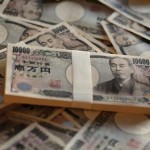Australian dollar rose against its US counterpart on trading Friday and was poised for a weekly advance, after yesterday an index of economic surprises for Australia by Citigroup climbed to highs unseen in ten months.
AUD/USD reached a daily high at 0.9084 at 8:40 GMT. At 8:44 GMT the pair was gaining 0.45% for the day to trade at 0.9081. It was set to register a weekly gain of 0.54%. Support was likely to be received at March 20th low, 0.8996, while resistance was to be encountered at March 19th high, 0.9134.
Citigroup Inc. reported that its Economic Surprise Index for Australia stood at 50.10 on Thursday, after climbing to as high as 50.60 on March 13th, which has been the highest level since May 23rd 2013. A positive reading is indicative that actual data releases surpass estimates by experts.
The Australian currency “may yet prove to be more like Wile E. Coyote from the ‘Road Runner’ cartoons, who often runs off of high cliffs and hovers in thin air for some time before gravity finally kicks in,” Michael Every, the Hong Kong-based head of financial markets research for Asia-Pacific at Rabobank International, wrote in a research note today, cited by Bloomberg News. “It’s not clear what’s the market equivalent of ‘Meep Meep!’”, he also wrote, referring to the cartoon character’s characteristic call.
Earlier on Friday the Conference Board research group said that its Leading index for Australia rose 0.2% in January, following another 0.9% increase in December. This is a key indicator, on which short-term and intermediate-term economic growth forecasts for the country are usually based.
The Aussie lost certain ground against the broadly strong greenback after at its meeting on policy, concluded on March 19th, the Federal Open Market Committee (FOMC) decided to pare back its monthly monetary stimulus by another 10 billion USD to 55 billion USD, while stating that asset purchases will be reduced by “further measured steps.” The Committee also dropped the unemployment rate threshold for considering when to raise interest rates, making a transition to a wider set of data.
At a press conference after her first meeting as Federal Reserve Chair, Janet Yellen said there might be a “considerable time” between the end of the stimulus program and the first increase in borrowing costs, meaning “around six months or that type of thing”.
According to Fed policy makers the benchmark interest rate target will be 1% at the end of 2015 and 2.25% in 2016. This has been a revision up compared to what was suggested in December, when central bank officials projected rates of 0.75% and 1.75% for the two respective periods.
Federal Reserve President for Dallas, Richard Fisher, is expected to take a statement on forward guidance in London later in the day. On March 5th he said that central banks bond-purchasing program was prompting investors to take excessive risk.
Meanwhile, the Aussie was advancing against the kiwi dollar, with AUD/NZD cross up 0.17% on a daily basis to trade at 1.0614 at 8:50 GMT. The pair touched a daily high at 1.0623 at 6:15 GMT, which has been its highest level since March 12th.





